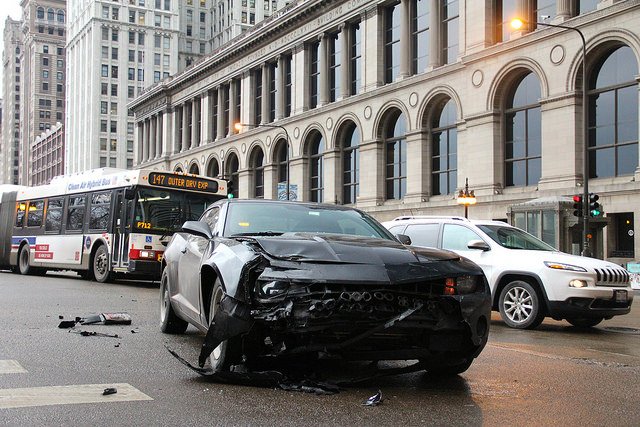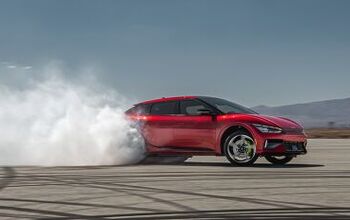Automatic Emergency Braking Won't Always Stop a Crash, But Americans Think It Will

Automatic emergency braking is finding its way into more and more cars (and automakers have a pact to make it standard equipment by 2022), but most drivers don’t know the technology’s limitations.
AEB systems slow or stop a vehicle in an emergency, preventing or mitigating a crash, but an American Automobile Association study shows that 71 percent of U.S. drivers familiar with the technology believe AEB will prevent all crashes.
AAA partnered with the Automobile Club of Southern California’s Automotive Research Center to test five 2016 models equipped with AEB. The tests showed the systems worked more or less as planned. During 70 trials, vehicles with AEB designed to prevent crashes slowed by twice the amount as those designed to simply slow the vehicle before impact.
Vehicles designed to prevent crashes shed, on average, 79 percent of their speed before impact. Those designed to mitigate the crash slowed by 40 percent. In tests conducted at speeds of 30 miles per hour or less, crash-avoiding AEB systems prevented 60 percent of the planned collisions
Still, there were some surprises in store for researchers. Under 30 mph, the systems designed to only lessen the impact actually avoided a collision 33 percent of the time.
At higher speeds, the performance of both systems diminished. At 45 mph, the crash-avoidance systems slowed the test vehicle by 74 percent, on average, and prevented collisions 40 percent of the time. The lesser AEB system only reduced vehicle speeds by nine percent.
Obviously, any reduction in speed helps the vehicle’s occupants. A speed reduction from 30 to 20 mph cuts the energy of an impact by 50 percent.
Still, the majority of drivers believe that all AEB systems will prevent a crash, without the need to manually apply the brakes. There’s a risk that motorists in AEB-equipped vehicles will become overconfident in their vehicle’s abilities. Slowing to 36 mph before hitting another vehicle is a far different outcome that avoiding the other car completely.
“The reality is that today’s systems vary greatly in performance, and many are not designed to stop a moving car,” said John Nielsen, AAA’s managing director of Automotive Engineering and Repair, in a statement.
Currently, nine percent of Americans drive a vehicle equipped with AEB. By September, 2022, virtually every new light-duty truck and car will carry the technology as standard equipment.
[Image: Daniel X. O’Neil/ Flickr]

More by Steph Willems
Latest Car Reviews
Read moreLatest Product Reviews
Read moreRecent Comments
- Jeff Maybe one day automatic braking will be better sorted out but as others have stated there are too many false alarms and those false alarms could get one rear ended. I agree about the tire pressure monitoring systems when the batteries go out on the sensors they don't work and they are never meant to last forever. Just buy a good tire gauge and learn how to check the tire pressure and put air in your tires.
- Carson D The funding is so they can travel to China to find manufacturers for their parts.
- Carson D 1996 OBD-II was a good set of regulations. Everything after that has been a net negative.
- ABC-2000 I just got a 2024 Crosstrek, first car for me that require 6000 K or 6 month service, I have been told I better follow that schedule if i actually want to keep it.In the last consumer reports survey, it was the only car that got 99 points for reliability, let's hope they are right (:-)
- Jeff I am going to agree with Tim knobs and buttons but I realize that is low tech but much safer than scrolling thru a screen to reset your interior temperature or to turn off the radio. Also bring back the mechanical parking brake instead of the electronic one.


































Comments
Join the conversation
Breaking news: Human stupidity threatens ability to maintain oxygen inhalation. Film at 11.
"Still, the majority of drivers believe that all AEB systems will prevent a crash, without the need to manually apply the brakes." Yeah, people are stupid. And they rely on and trust technology too much - implicitly and instantaneously. They assume because they have a feature, their guard and common sense can be disabled. See: Tesla Autopilot See: GPS crashes See: AWD overconfidence See: ABS overconfidence See: Backup cameras